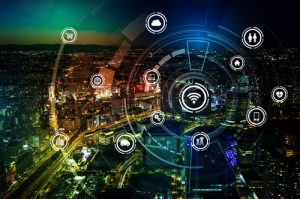As the world of e-commerce grows, it has sparked the interest of business owners. They are always looking for the next best thing.
In 2023, more ecommerce brands will boost their efforts to use artificial intelligence and machine learning for personalization.
A personalized shopping experience can increase a brand’s sales conversion rates by 15% to 20%.
1. Livestream Shopping
Livestream Shopping (also known as live video shopping) is a growing trend that allows online shoppers to interact with brands and shop their products through real-time streaming. It removes the friction that traditional e-commerce has had on consumer purchase decisions and allows consumers to connect with brands at a personal level.
Retailers are using livestream shopping to reach new audiences, build relationships and boost brand awareness. Some of the biggest retailers in the world have jumped on the livestream bandwagon, including Walmart and TikTok.
Streamers can offer tutorials or help viewers make their purchases by answering questions about sizing, color and styling. Moreover, live streaming can provide a more immersive experience for shoppers, as it gives them an opportunity to see how products look in different environments.
2. Personalized Shopping Experiences
In the future of online shopping, customers will expect personalized experiences that match their preferences. They will also expect to have the option to purchase products in a variety of ways, including through mobile apps.
Personalized shopping is a powerful way to attract new customers, increase sales, and improve retention. These programs can boost sales by 1 to 2 percent for grocery retailers and 10 to 20 percent for other retailers like men’s wear, women wear or beauty and accessories.
Retailers can create unique customer journeys by leveraging data to target customers based on their individual interests, style choices, and habits. They can also use this information to create strategic pricing, advertising, and cross promotions based on customer trends.
3. Voice Search
Voice search has become a popular way for consumers to find information and products online. It’s fast and convenient, and it can even save users time and money.
As it continues to expand in popularity, voice search will likely be a part of our daily lives for many years to come. In fact, eMarketer predicts that 33.2 million US consumers will use voice search on their smart speakers to shop in 2022.
For brands, integrating voice search features can be an effective way to reach customers and increase revenue. But before you start implementing it, there are a few things to consider. First, it’s important to understand the differences between voice searches and typed searches.
4. Mobile E-Commerce
Mobile E-Commerce (m-commerce) is a type of online shopping that takes place on a mobile device. It’s a popular way for businesses to reach a broader audience and boost sales.
It’s also a great way for consumers to compare prices and save time. They can find the best price for a product in just a few clicks, and they don’t need to drive to a store or deal with checkout lines.
Some of the trends that are shaping the future of mobile e-commerce include one-click ordering, location-tracking, and augmented reality (AR). For example, AR allows customers to see how a product will look in their home without having to buy it. This helps reduce customer frustration, and it could help increase conversions.
5. Artificial Intelligence
AI is a fast-growing technology that is expected to make a significant impact on the online shopping industry. The technology is used to provide personalized recommendations for users, which can help them save money and time.
The industry is also using Artificial Intelligence to streamline its marketing processes and increase ROI. This has led to a large corporate investment in AI and machine learning.
However, there are still many concerns with this technology. Among them are the possibility of bias in AI models and cybersecurity risks.
This is why organizations are focusing on responsible AI practices and equipping their teams with the proper tooling to govern data science and ML models. These include tools for monitoring and mitigating bias in production AI systems to catch and explain the exact data points or features that led to a biased prediction.


